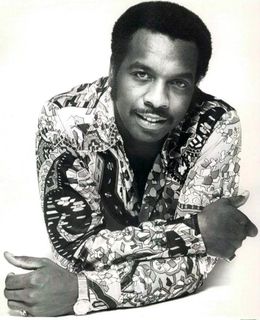David Walsh & Joanne Laurier
Although technologies have sped up—and made possible—many things, they cannot by themselves overcome the gap between reality and its artistic assimilation and representation. That gap, in the first place, has an objective character.
As Leon Trotsky noted in Literature and Revolution, “The nightingale of poetry, like that bird of wisdom, the owl, is heard only after the sun is set. The day is a time for action, but at twilight feeling and reason come to take account of what has been accomplished. … As a matter of fact, all through history, mind limps after reality.”
The artistic mind is certainly limping along badly at present. In fact, for the moment the gap between art and reality is growing larger, as the economic and political contradictions intensify at an ever quickening pace.
This past year witnessed various political earthquakes: Brexit, a near coup in Turkey, the election of Donald Trump, the conflict in Syria, the anti-Russian hysteria of the American media, etc. A number of the events, in a contradictory manner, expressed mass popular disaffection and anger. Right-wing, nationalist parties have gained the most at this point, because of the utter worthlessness of both the traditional “left” parties and trade unions and the upper middle class pseudo-left, totally obsessed with race and gender. This is not a permanent situation.
For the most part, the film community in the US, at least on the surface, remains in thrall to racial and gender politics and the Democratic Party. This largely prevents it at present from doing anything truly sharp or innovative, or orienting itself to the most burning social questions.
 Loving
Loving
However, whatever the conscious intentions of the filmmakers involved, both Free State of Jones (Gary Ross) and Loving (Jeff Nichols) cut across the racialist narrative in particular. Each in its own way demonstrated on the basis of historical experience that a struggle against oppression in America, including racism, is only possible on the basis of the highest, noblest ideals and the combined efforts of the entire working class population.
Oliver Stone’s Snowden, moreover, argued that the Obama administration represented a “seamless transition” from its predecessor in continuing to construct not merely the foundations, but the walls and floors of a police state.
 Snowden
Snowden
The appearance of those three films had some significance. Appropriately, the overall critical and media response to Free State of Jones and Snowden was hostile.
A number of important foreign films from 2015 made brief appearances in North American movie theaters in 2016, including Colonia (Florian Gallenberger), about the horrors perpetrated by the Chilean military dictatorship and its ex-Nazi supporters, and The People vs. Fritz Bauer (Lars Kraume), on the hunt for Adolf Eichmann and the Frankfurt Auschwitz trials in the early 1960s. Also from 2015, less significant, but still intriguing, were Ixcanul [Volcano] (Jayro Bustamante), about a Mayan girl in Guatemala and her struggles, and Microb e and Gasoline (Michel Gondry), in which a couple of French adolescents try to make their way in the world.
 Sami Blood
Sami Blood
We saw a number of films at film festivals this year that have not yet been released in the US. Most prominent among them were The Chosen (Antonio Chavarrías), about Trotsky’s assassination, Sami Blood (Amanda Kernell), on the subject of the aboriginal people in Sweden in the 1930s, Marija (Michael Koch), dealing with immigrants in Germany, and Lady Macbeth (William Oldroyd), which treats social oppression and stifling in the 19th century.
So here are three lists:
1. New films released in 2016 in the US
Free State of Jones (Gary Ross)
Loving (Jeff Nichols)
Snowden (Oliver Stone)
Certain Women (Kelly Reichardt)
Indignation (James Schamus)
Wiener-Dog (Todd Solondz)
Loving (Jeff Nichols)
Snowden (Oliver Stone)
Certain Women (Kelly Reichardt)
Indignation (James Schamus)
Wiener-Dog (Todd Solondz)
If they are not successful films, Manchester by the Sea (Kenneth Lonergan) and Moonlight (Barry Jenkins), and perhaps Paterson (Jim Jarmusch), at least indicate a growing interest in the conditions and feelings of wider layers of the population, and not just the top 5 or 6 percent.
 Marija
Marija
2. 2015 films released this year in the US
The Colony (Colonia, Florian Gallenberger)
The People vs. Fritz Bauer (Der Staat gegen Fritz Bauer, Lars Kraume)
Ixcanul, or Volcano (Jayro Bustamante)
Microbe & Gasoline (Microbe et Gasoil, Michel Gondry)
The People vs. Fritz Bauer (Der Staat gegen Fritz Bauer, Lars Kraume)
Ixcanul, or Volcano (Jayro Bustamante)
Microbe & Gasoline (Microbe et Gasoil, Michel Gondry)
 Lady Macbeth
Lady Macbeth
3. Films viewed at festivals this year and not yet released in the US
The Chosen (El elegido, Antonio Chavarrías)
Sami Blood (Sameblod, Amanda Kernell)
Marija (Michael Koch)
Lady Macbeth (William Oldroyd)
Past Life (Avi Nesher)
Radio Dreams (Babak Jalali)
Sami Blood (Sameblod, Amanda Kernell)
Marija (Michael Koch)
Lady Macbeth (William Oldroyd)
Past Life (Avi Nesher)
Radio Dreams (Babak Jalali)




